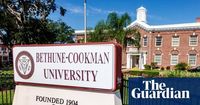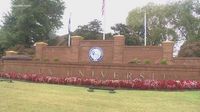A wave of coordinated racist threats swept through historically Black colleges and universities (HBCUs) across the United States this week, leaving campuses on edge and communities reeling from the psychological aftermath. According to the FBI, at least seven HBCUs—including Alabama State University, Virginia State University, Hampton University, Spelman College, Southern University and A&M College, Clark Atlanta University, Morehouse College, and Bethune-Cookman University—were forced into emergency lockdowns on September 11, 2025, after receiving threatening communications that targeted Black students with explicit violence.
The threats, which the FBI later determined to be fabricated, nonetheless triggered genuine terror and disruption. Students at Hampton University described the sudden shift from routine campus life to an emergency lockdown as deeply unsettling. Donovan Washington, a student at Hampton, captured the mood: he spoke of disbelief and concern for classmates barricading themselves in dorm rooms, with the uncertainty of the threat’s legitimacy casting a long shadow over the campus. "The safety and wellbeing of our students, faculty, staff and visitors remain our highest priority," Hampton officials said as they halted all non-essential activities and closed classes through Friday, including athletic events.
Even institutions that weren’t directly targeted felt the ripple effects. At Norfolk State University, students reported anxiety and heightened concern despite not being named in the threats. A’Lauren Gilchrist, a student at Norfolk State, explained how interconnected HBCU communities are—social media and group chats meant that the fear and uncertainty spread far beyond the initial targets. The administration responded by increasing security, but the emotional toll lingered. "You can’t just go back to normal after something like this," one student remarked, echoing a sentiment heard across campuses nationwide.
The threats arrived just one day after a separate tragedy: the killing of far-right activist Charlie Kirk at Utah Valley University. While there is no evidence that the two incidents are connected, the timing added another layer of anxiety for students already grappling with questions about their safety and the persistence of hate-motivated violence in educational spaces. According to The Guardian, the FBI emphasized, “The FBI takes these threats very seriously because it puts innocent people at risk. We urge the public to remain vigilant, and report any and all suspicious activity and/or individuals to law enforcement immediately.”
At New York University, Black students received a chilling manifesto that, according to an email from the university’s Black Student Union, contained “extremely graphic threats of gun violence” and was explicitly racist. The manifesto declared the author was “coming for only n******,” suggesting that Black students were taking away from a “safe space” for white people. The Black Student Union criticized NYU officials for what they saw as a “lack of transparency,” alleging that administrators waited more than six hours before informing students about the targeted nature of the threat. NYU did not immediately respond to media requests for comment.
Virginia State University’s president, Makola M Abdullah, addressed the campus community with a message of resilience: “Today, Virginia State University – along with several other Historically Black Colleges and Universities – received a threat intended to disrupt, intimidate and instill fear in our community.” The university enacted a temporary lockdown and, upon lifting it, restricted campus access to those with valid identification. Abdullah was unequivocal: “These threats are not random. They are targeted attacks on institutions. To those who seek to silence or scare us: we will not be intimidated.”
Alabama State University responded swiftly as well. President Quinton T Ross Jr. confirmed that the school “received a terroristic threat directed at our campus” and immediately suspended operations “out of an abundance of caution.” The university worked closely with law enforcement while ensuring students could return to their residence halls and access meals safely. Meanwhile, Southern University in Baton Rouge implemented perhaps the most extensive lockdown, covering the entire “Baton Rouge landmass”—including the law center, agricultural research and extension center, and laboratory school. All classes and campus activities were canceled through the weekend.
For many students and staff, the psychological impact of these threats has been profound. Clinical mental health therapist Dr. Sarah Williams stressed the importance of recognizing and processing the trauma, rather than dismissing the incidents as mere disruptions. “Even hoax threats can create lasting psychological effects, especially when they target institutions with historical significance to communities that have faced discrimination and violence,” Dr. Williams explained. She and other mental health professionals recommend creating safe spaces for discussion and emotional processing, rather than rushing to resume normal routines. The therapeutic community also suggests limiting social media use during recovery periods, as the constant stream of updates and speculation can amplify anxiety.
Students have begun to take these recommendations to heart, with many implementing their own digital detox strategies. By stepping away from online discussions about the threats, they’re finding much-needed space to focus on personal well-being and immediate surroundings. This approach, mental health experts say, is crucial for healthy recovery and long-term resilience.
Campus counseling centers at affected institutions have reported a surge in demand for mental health services. The uptick is a stark reminder that the effects of hate-motivated hoaxes are not fleeting. Recovery experts emphasize that healing begins with honest acknowledgment of the fear and disruption experienced. Rather than minimizing the events or urging students to move on quickly, institutions are being called to support students as they process their emotions and regain a sense of security.
This isn’t the first time HBCUs have been targeted by such threats. In 2022, the FBI launched an investigation into a series of similar incidents, ultimately charging an individual with making dozens of racist threats. The recurrence of coordinated threats in 2025 has reignited concerns about the persistent vulnerability of Black students and the institutions that serve them. As federal and local law enforcement agencies continue their investigations, most affected universities have lifted their lockdowns but kept enhanced security measures in place. Classes and campus activities remain canceled at several institutions as a precaution.
The broader HBCU community, meanwhile, is rallying together. Students, faculty, and alumni are sharing messages of solidarity, offering mutual support, and reaffirming their commitment to educational excellence in the face of adversity. The events of this week have underscored the resilience of these communities—and the urgent need for continued vigilance and support as they strive for safety and healing.
As the investigation unfolds, the message from HBCU leaders is clear: they will not be intimidated into silence or fear. Instead, they are choosing to confront the trauma head-on, prioritize mental health, and support each other through recovery. The scars left by these threats may linger, but so too does the determination to persevere.

